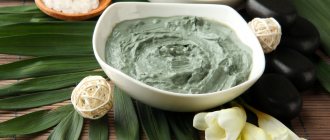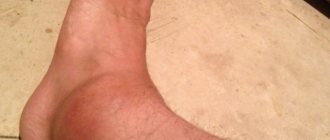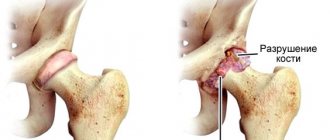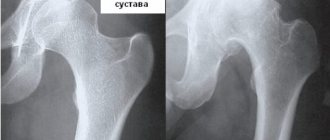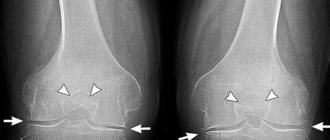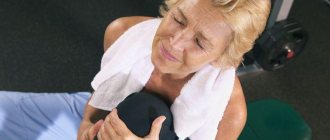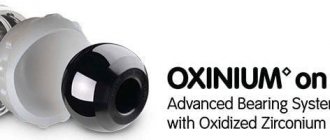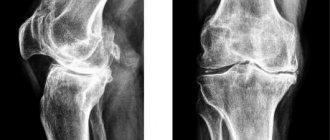Traditional methods of treating joints seem to many to be a safe, natural replacement for the use of modern medications and physiotherapy, the mechanism of which remains unclear to many. However, in practice, treating joints with traditional methods most often turns out to be nothing more than a waste of time, which could be used much more fruitfully. Only a few of all folk methods are capable of providing at least a minimal therapeutic effect; the use of most of them is useless, and some are dangerous to health.
Let's take a closer look at the most “popular” folk methods of treating joints.
Treatment with improvised means
Treatment of joints with snow and salt in the form of cold compresses is one of the most famous and accessible folk methods. If you decide to try it on yourself, you can be sure: treatment of the joints of the legs and arms will be cheaper than ever: snow for compresses can be collected on the street for free, and a kilogram pack of salt costs a penny. True, treating joints with snow and salt will bring little benefit, and in some cases it can even cause harm - cold helps to soothe the pain, but during acute inflammation, an icy wet lotion will cause hypothermia and will only worsen the situation. And table salt, which helps to resolve swelling and thereby somewhat alleviates painful symptoms, does not bring any benefit to tissues affected by pathological processes.
Approximately in the same range of effectiveness is the treatment of joints with salt, which is usually carried out using bandages applied to the joint, soaked in a strong solution of table or sea salt and taking local baths. For arthritis and arthrosis, treating joints with salt will help reduce swelling by “pulling” some of the fluid from the tissues, and thereby relieve pain, but it will not stop the inflammatory process and will not slow down the destruction of the joint, providing only a symptomatic effect.
Treatment of joints with soda is carried out in the same way: bandages and lotions are made with a solution of baking soda, or, if the patient requires treatment of the joints of the hands or feet, local baths are used. Some luminaries of traditional medicine believe that an alkaline environment helps to “deoxidize” the body, improves the functioning of cells and activates regenerative processes, but there is no strong evidence for this theory. And it is unlikely that baking soda, which penetrates soft tissues in small quantities, can significantly affect their pH. The only thing that treating joints with soda does is about the same as using table salt: a strong solution helps relieve swelling, but does not affect the condition of the joint as a whole.
Treating joints with honey will also help relieve swelling - the sweet compress draws out excess fluid from the tissues. But we are not talking about eliminating inflammation, or restoring cartilage, much less about feeding the joint with easily digestible carbohydrates, which some experts in traditional medicine talk about: treating joints with honey will only briefly alleviate the symptoms of arthritis and arthrosis.
Treating joints with foil by wrapping the sore spot and gluing foil pads to the spine is a method that will not bring even the slightest benefit. Articles about the benefits of wrapping sick joints in foil are full of expressions such as “returning biocurrents” and “increasing positive energy,” and this speaks for itself: there is simply no scientific explanation for this technique. If treating joints with foil has any effect, it is nothing more than a placebo effect.
Sometimes treatment with turmeric is used for arthritis and arthrosis. It is recommended to treat joints with this remedy in two ways: the spice is boiled in milk for oral use or compresses are made by mixing it with ginger or cinnamon. When used internally, no result can be achieved, but when used externally, turmeric, especially when mixed with other spices, has a locally irritating effect, improving tissue nutrition and alleviating pain. However, treatment with turmeric will not restore or cure joints completely; it will only help cope with some of the manifestations of the disease.
Apples are one of the most accessible and healthy fruits, but there is no need to talk about treating a joint with apples. But treating joints with acids, or more precisely, apple cider vinegar, is one of the popular folk methods. Rubbing and compresses with apple cider vinegar, like compresses with turmeric, have a local irritating effect, but treating joints with acids will not give fantastic results - at best it will relieve symptoms and alleviate the patient’s condition if the disease has not gone too far. That is, the benefit from them is not much greater than when treating a joint with apples, which are useless for arthritis and arthrosis.
Unlike all of the above methods, treatment of joints with gelatin is based on the use of “medicine” internally. Most instructions widely distributed on the global web suggest eating jelly from two teaspoons of gelatin per 250 ml of water at least two to three times a week. The taste of the jelly can be varied with milk or a decoction of dried fruits. Unlike many other methods, treating joints with gelatin can partly improve the condition of connective tissue - it is the collagen contained in it that underlies all joints of the musculoskeletal system and ensures the strength of bones. But reviews left by patients who have tried treating joints with gelatin indicate that jelly cannot be compared with modern chondroprotective agents. The only advantage in which all the reviews and comments about treating joints with gelatin coincide is the low cost of the product and its positive effect on hair and nails.
An integrated approach to the treatment of arthrosis of the knee joints
ARTHROSIS (osteoarthrosis) is a chronic progressive disease of the joint, in which, as a result of significant changes in the cartilaginous surfaces, the joint space narrows, numerous osteochondral growths gradually appear around the joint, blocking the joint and leading to a gradual limitation of its function and deformation (Fig. 1):
Fig.1. X-rays of the knee joint:
a – stage 1 of arthrosis; b – stage 2; c – stage 3: the joint space is sharply narrowed.
Arthrosis ranks first among diseases of the musculoskeletal system in the elderly and second among the causes of disability in patients over 50 years of age.
Increasing pain and limited joint function reduce a person’s ability to work, and 30% of patients with arthrosis become permanently disabled. Therefore, arthrosis must be treated in a timely manner - already when the first complaints of joint pain appear. In recent decades, the number of patients with arthrosis has been constantly increasing. This is due to an increase in joint injuries, professional and sports stress, an increase in human life expectancy, dietary habits and many other reasons. In connection with this arthrosis, people can begin to get sick even at the age of 25-30 years (Fig. 2)
Fig.2. The joint is normal and with arthrosis.
MAIN RISK FACTORS FOR OSTEOARTHROSIS DEVELOPMENT:
- Age over 40 years
- Female
- Increased physical activity
- Excess weight
- History of joint injuries
- Intense sports activities
- Smoking
- Flat feet
- Malunited fractures
- Congenital deformities of the lower extremities
How to diagnose arthrosis
If joint pain occurs, it is necessary to perform an X-ray of the joint, an ultrasound, and, if necessary, an MRI, and also consult a rheumatologist.
How to treat arthrosis
For diagnosed arthrosis of the knee joint, treatment should include:
· drug therapy;
· surgical intervention;
· massage and manual therapy;
· rehabilitation therapy - exercise therapy and physiotherapy.
CONSERVATIVE TREATMENT
(preserving, non-surgical)
Conservative treatment will have a positive and long-lasting effect if incorrectly healed fractures and deformities of the limbs are first eliminated surgically.
Only after this can physiotherapy, exercise therapy and chondroprotectors be used for 3 to 6 months.
Drug treatment for arthrosis is aimed at relieving inflammation in the joint or tissues surrounding the joint. For this purpose, non-steroidal anti-inflammatory drugs are prescribed.
Intra-articular injections of glucocorticoids (corticosteroid hormones) can quickly reduce inflammation in the joint, manifested by swelling of the knee and its edema, often due to the presence of an excess amount of joint fluid. Hormone injections into the joint are performed once every 2-3 months, strictly according to the doctor’s indications and only in a sterile dressing room or operating room.
Chondroprotectors include chondroitin and glucosamine. These substances slow down the destruction of cartilage tissue and help reduce pain.
Intra-articular administration of chondroprotectors in the form of hyaluronic acid preparations is very effective in the treatment of arthrosis.
One of the best local remedies is Dimexide. This liquid eliminates joint swelling and has an anti-inflammatory effect. For a compress, it is diluted with water in a ratio of 1:2 - 1:4. The best effect is achieved by the combined use of anti-inflammatory ointments in combination with dimexide.
If conservative treatment is ineffective, it is always possible and necessary to use minimally invasive (low-traumatic) surgical methods, such as tunnelization and arthroscopy.
MINIMALLY INVASIVE SURGICAL TREATMENT
Tunneling
Tunnelization of cartilage defects is a minimally invasive (low-traumatic) innovative technique, the purpose of which is to reduce pain. To do this, the surgeon, under general or local anesthesia, uses a thin needle to form channels in the subchondral (subchondral) bone. In this case, the increased intraosseous pressure is mechanically eliminated and at the same time the intensity of the process of microcirculation of cartilage tissue increases, which is saturated with a sufficient amount of oxygen (Fig. 3).
Rice. 3. Scheme and methodology for tunneling.
Tunneling Features:
· Joint pain goes away immediately after surgery.
· The next day after surgery, you can fully put weight on the operated leg.
· No external fixation or use of crutches or canes is required.
· The operation is performed in 15-20 minutes under general or local anesthesia!
Advantages of tunneling:
· The operation is low-traumatic and can be performed at any age;
· A long-term analgesic effect is achieved (according to our data – up to 10 years);
· Improves blood circulation in joint cartilage;
· The progression of arthrosis slows down;
· Tunneling can be repeated!
If you have any questions about the treatment of arthrosis and tunnelization, you can ask them by calling (8452) 392-157 and 89085546247.
Phytotherapy
Treatment of joints with nettle leaves, from which folk sources suggest making compresses on sore spots, is a kind of analogue to the use of burning ointments, but only delivers much more unpleasant sensations. Nettle burns itch for a long time and are accompanied by severe swelling, and for allergy sufferers its use can be dangerous, so it is much easier to simply buy an ointment with capsaicin or bee venom, which has local irritating properties, and leave the treatment of joints with nettle leaves to extreme sports enthusiasts.
Unlike nettle, treating joints with bay leaves will not cause any discomfort when used externally. It is recommended to brew it with boiling water and apply it as a compress: the warm boiled leaf will help warm the joint and soothe the pain. It has a mild anti-inflammatory effect, and in case of minor damage to the joint by the pathological process, it will help relieve symptoms, but will not stop the further development of the disease. Sometimes it is also advised to drink a decoction (some sources suggest mixing it with gelatin), but reviews from patients say that treating joints with bay leaves in this way is practically ineffective.
Treatment with joint cones can benefit the body due to the vitamins and microelements contained in the young cones used to prepare a drinking decoction. But this decoction will not do anything directly to the joints. Baths and compresses with infusion of cones have an anti-inflammatory effect and improve local immunity, but their effect is too weak to be used as the main means of combating the disease. Therefore, treatment with joint cones should not be considered as a salvation from arthritis and arthrosis.
Many experts advise using cinquefoil to treat joints: a number of pharmaceutical preparations have been created based on the extract of this plant. Local baths, lotions, compresses are made with cinquefoil rhizomes, and they are used for rubbing - the natural chondroprotectors contained in the plant really promote the restoration of cartilage and stop their degeneration during arthrosis. But cinquefoil helps in treating joints only in relatively mild cases: it cannot cure severe advanced forms of the disease.
But treating joints with maple leaves is not the best idea due to its uselessness. Tannins contained in maple leaves and bark help with stomatitis, periodontal disease, gastrointestinal diseases, and some skin diseases, but they will not cure arthritis, arthrosis, or osteochondrosis and will not even relieve symptoms. Therefore, treatment of joints with maple leaves - no matter whether they are used as a compress or a decoction for oral administration - does not even need to be started.
It is also not worth using chestnuts to treat joints: products based on horse chestnut have proven themselves to be excellent as a cure for varicose veins and trophic disorders of the lower extremities, but diseases of the musculoskeletal system are not their specialty. In essence, there is no need to collect chestnuts to treat joints, infuse them, rub sore spots and make compresses - they will not have a noticeable effect.
An even worse option is to treat joints with fly agaric: a tincture of a poisonous mushroom, which is recommended for rubbing, has an analgesic effect, but is also very toxic. And she is not able to cope with the cause of the pain. So it’s better not to take risks and not try to treat joints with fly agaric: when there were no alternatives, this option could be taken seriously, but today there are much more effective and safe options.
Separately, it is worth mentioning the treatment of joints with oils: numerous essential oils, such as eucalyptus oil, peppermint, cinnamon, cloves, tea tree, can have an analgesic, decongestant, locally irritating, warming, anti-inflammatory effect, and their benefits are recognized by most modern specialists. But treatment of joints with oils is used only in combination with modern powerful therapeutic measures, because their effect alone does not have the power necessary to combat joint diseases.
Exotic options
Treatment of joints with stem cells is a technique advertised by modern clinics, in which stem cells are introduced into the thickness of destroyed connective tissue and, theoretically, gradually begin to restore it. In reality, everything is more complicated: the use of stem cells often does not produce noticeable results, and in some cases leads to the development of malignant tumors. In addition, treatment of joints with stem cells is very expensive and not everyone can afford it, and very few clinics provide it. So it’s worth thinking about something more affordable and not threatening serious illnesses in the distant future.
Treating joints with your own fat is a relatively new method of treating degenerative diseases of connective tissue. As part of this technique, which is gradually replacing stem cell treatment, the patient’s own fat cells are injected into the damaged joint. With the exception of the risk of cancer, treating joints with your own fat has the same disadvantages as using stem cells - connective tissue does not always begin to recover after the procedure, and its cost cannot be called low or even affordable.
The same can be said about the treatment of joints with blood plasma, also known as plasmolifting: instead of stem or fat cells, the patient’s own blood plasma cells are injected into the joint. Treatment of joints with blood plasma is expensive, and the results may not correspond to the costs.
Treating joints with animal and bird fat in the form of rubbing and compresses is a common option, but not nearly as effective as you might think. Patients suffering from arthritis and arthrosis are looking for horse fat to treat joints, trying to treat joints with bear fat, buying badger fat... Treating joints with all these means, however, brings little benefit, because fats practically do not penetrate into the soft tissues. So you shouldn’t believe stories about super-effective treatment of joints with fat: it doesn’t matter whether you rub pork, bear or goose fat into the area affected by the pathological process - treating joints in this way will not help cope with the disease. It’s worth considering fish oil separately: treating joints by taking the product internally is also not very effective, but many doctors recommend it as a preventive measure for joint diseases. Omega-3 acids and vitamins from fish oil have a positive effect on the condition of the entire body, especially the musculoskeletal system.
Clay treatment of joints is an effective technique, but only when using special healing clays. You should not try to use simple red clay, because it does not contain the minerals necessary for successful effective procedures. However, treating joints with clay will not cause harm, unlike many other therapeutic techniques discussed above.
How will we treat ourselves?
It’s sad to admit this, but none of the common and advertised folk methods for treating joint diseases is able to cope with its task. Even the few remedies that have at least some effect are too weak and not worth wasting time on. It is better to immediately begin effective treatment, the results of which are confirmed by positive reviews and clinical trials.
Many doctors believe that the best treatment for joints is a complex of physiotherapeutic procedures, exercise therapy and properly selected medications: chondroprotectors, anti-inflammatory and painkillers. The AMT-01 device, an inexpensive Belarusian magnetic therapy device, will be an excellent assistant in treatment. This procedure is often called the most useful for diseased joints - a course of magnetic therapy will help relieve inflammation, pain, improve tissue trophism and thereby increase the effectiveness of drug therapy. The price of AMT-01 is low, and the guaranteed service life of the device is five years.
A triple blow to diseases of the joints and spine will be delivered by the ready-made BishoMag set: the AMT-01 device, Forez-gel with bischofite - a natural magnesium chloride that has a huge positive effect on the joints - and the chondroprotector Karipain in the form of capsules. Its price is slightly higher than the price of the “lonely” AMT-01, but still remains within the reach of every patient, and the ability to purchase goods via the Internet makes it possible not only to treat joints in Moscow, but also to carry out procedures at home in any region of the country.
Another procedure is not inferior to magnetic therapy, and partly superior to it: electrophoresis . Using an electrophoresis apparatus, you can quickly deliver the active components of almost any drug into the thickness of soft tissue, and a weak electric current itself stimulates all vital processes in cells, improving local immunity and promoting rapid regeneration. To carry out electrophoresis at home for diseases of the joints and spine, we offer a ready-made “Vector Arthro” kit, which includes the Elfor device, Karipain in the form of a dry extract and gel, as well as a set of electrodes. The set is inexpensive, but allows you to carry out procedures on only one joint.
But what should patients do if several joints are affected at once? Are there methods for treating knee joints that allow them not to waste extra time on successive procedures?
Of course, such a possibility exists. And we offer two sets with which you can perform procedures on both arms or legs at once: this is “Vector Plus No. 1”, equipped with the PoTok device, and “Vector Plus No. 2” - it includes the Elfor-Prof device. They will help carry out procedures much faster, without taking up the patient’s time, but their cost is significantly higher.
The Physiosphere store guarantees the high quality and reliability of its devices, the safety of the drugs presented in its assortment, as well as fast delivery of the purchase to the client. It doesn’t matter where the patient who needs joint treatment lives - in St. Petersburg, Moscow or Vladivostok: he can always count on us and our products for physiotherapeutic procedures!
Therapeutic treatment of a torn meniscus of the knee joint
It is important to know the symptoms and treatment of injury in order to provide competent and effective emergency care for meniscus damage. This will help quickly relieve pain and avoid worsening the patient's condition.
First aid for meniscus damage is pain relief and fixation of the injured joint. The victim must be quickly, carefully and carefully taken to the hospital.
If no fracture is found during the diagnosis, a puncture of the knee joint is performed to eliminate the hematoma. Next, the blockade is removed:
- downward traction of the foot;
- deviation of the lower leg in the direction opposite to the affected meniscus;
- rotational movements inward or outward;
- full, gradual extension of the knee joint without the use of force.
After removing the blockade, a fixing bandage or plaster is applied. Cold is applied locally. The patient must remain in bed for up to 10 days and wear a bandage for up to 5-6 weeks, trying to keep the leg elevated.
During the rehabilitation period, physiotherapy (UHF, phonophoresis, magnetic therapy), massage and physical therapy are used. Patients are prescribed anti-inflammatory drugs and chondroprotective drugs. At the beginning of the recovery period, it is recommended not to put any weight on the sore leg; when walking, use supports - crutches or a walker.
Rehabilitation time is determined individually based on:
- patient's age;
- zone, type and severity of damage;
- the method of treatment used;
- the presence of degenerative processes in the meniscus.
The best prognosis for therapeutic treatment of a meniscus tear is in people under the age of 40 who are in good physical shape and do not have chronic joint diseases, diabetes, or diseases of the circulatory system.


